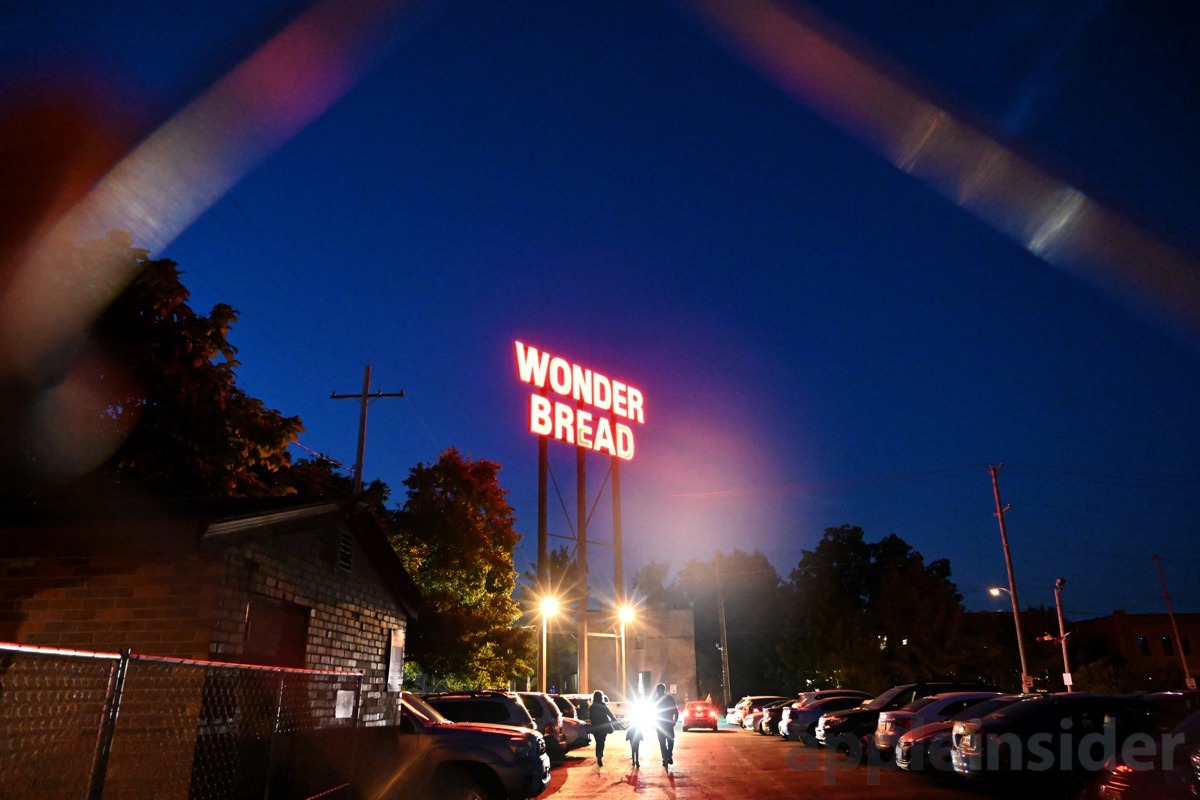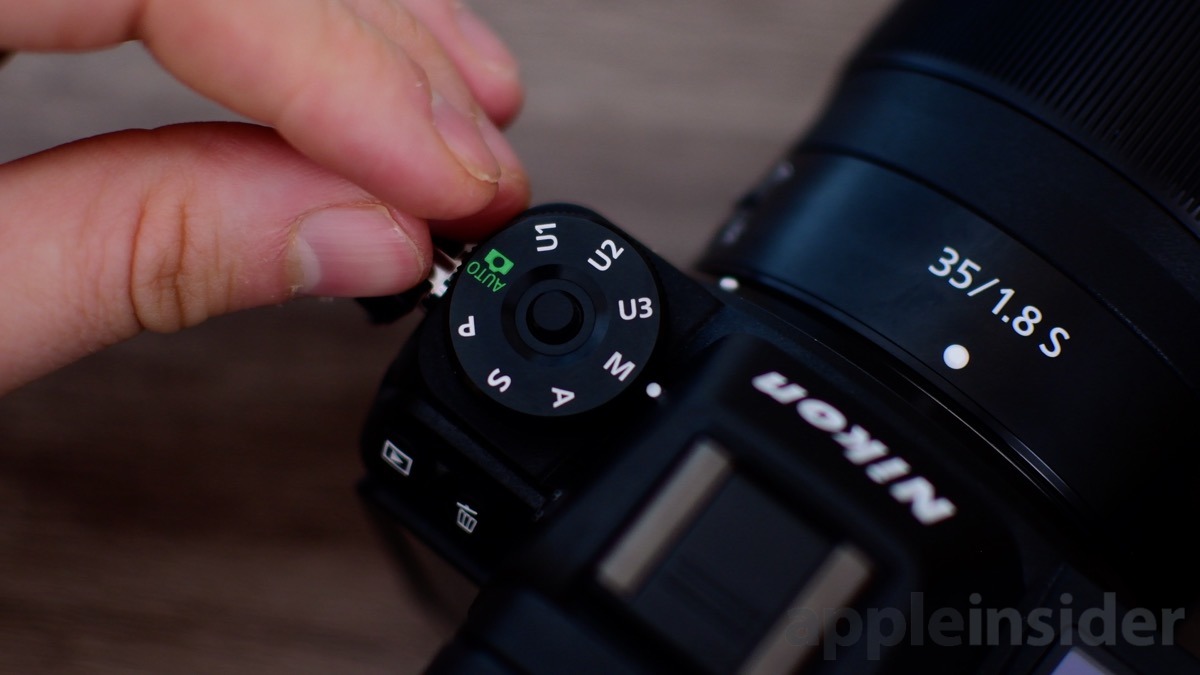Nikon's flagship Z7 mirrorless shooter is a big step forward for the camera maker, with an eye to the future with many forward-thinking technologies built in to back up the impressive image quality.
The Nikon Z7 is a mirrorless camera, which means it ditches the mirror reflex system found in DSLRs. One of the biggest selling points to this is that Nikon can include a full-frame sensor while keeping the body very small and portable.
Between the Sony A7RIII and Canon EOS R, Nikon has the most compact body design. It is comfortable to hold and is just large enough to fit well in the hand.
From an ergonomics perspective, as your hand fits around the grip, the curves around the card door and shutter pull your hand up just slightly. This keeps your pinky from sliding off the bottom.
The electronic viewfinder (EVF) also sits just away from the body. When you look through it, your nose doesn't touch the display, unlike on the Sony.
Inside, we've got the latest Nikon Expeed 6 ISP powering a full-frame 45.7MP sensor. It has an ISO range of 64-25,600, works with Z-mount lenses, and has an internal five-axis stabilization system.
All the ports are located on the left side of the camera, divided into two vertical columns. The first two ports are for headphones and a mic. The second column has the USB-C port on top but we'd rather have it on the bottom of the stack, followed by mini HDMI, then the remote socket.
Like all of the other Nikon high-end cameras, it is weather-sealed, so shooting outdoors in the elements shouldn't be an issue. The only downside is that when we shot down a dusty road, the dust kicked up messed with the proximity sensor by the EVF, which confused the camera to think we were using the EVF when we weren't. It was luckily an easy fix, just wiping the dust away.
Navigation
We've always been a fan of Nikon's menu system. It isn't quite as easy as the likes of Leica, but it is certainly more approachable than that of the Sony.
All the buttons on the back are very similar to many other Nikon cameras. Top left is an adjustment wheel to switch between the common exposure modes such as Manual, Programmed, Aperture-Priority, and Shutter-Priority. To rotate the wheel, press the button in the middle and twist the edge. There are also two user presets here, as well as auto.
On the top right, we have the on/off toggle, the shutter, the exposure compensation button, the ISO button, and the video record button. There is also the top display with keys info such as the ISO, battery life, aperture, shutter mode, and remaining image count.
We've come to enjoy using the updated touch screen along the back. It is an articulated screen that can tilt up and down, though not to the sides. Tapping the info button brings up all the current shooting settings, and any that can be changed depending on the exposure mode will have a box around. This makes it very fast and easy to know what you can and can't adjust.
To change any of those settings, it is as easy as just tapping on them and swiping the values or using the arrows. All of this information, including image previews as well, can be viewed within the EVF rather than the display, This makes a big difference when shooting outdoors and it is hard to see what is on the display in the sun.
Shooting
The new display is capable of previewing the image before you take the shot, which is slightly different than other Nikons.
For example, we took both the Z7 and the D500 to shoot some long exposure waterfall shots. To do so, we dropped the ISO all the way down to 64, increased the shutter speed to one second, closed the aperture to f/14, and adjusted the exposure down about a step. Other than the blurred water, we actually got an accurate preview of the image on the display. The picture we took looked exactly the same other than the soft water.
When we went to try the same shot on the D500 and used the display, there were two big differences. One, when in Live View, the D500 had a significant lag on the shutter regardless of a shooting a longer exposure, or a quick one. This was very nearly unusable. Fortunately, with the camera on a tripod, that wasn't a factor.
But, the bigger issue is that the image you see on the D500 display does not accurately reflect the image that is taken. It actually looks very dark, because it isn't taking into account how long the shutter is open, which lets in much more light.
This is a profound change and makes a drastic difference when shooting with the Z7 versus the D500.
We took our new Nikon Z7 out on the road to gather some test images, including those aforementioned waterfall shots.
 35mm f/1.8 ISO 360 1/8,000 | View full size
35mm f/1.8 ISO 360 1/8,000 | View full size 24-70mm f/4 ISO 800 1/30 | View full size
24-70mm f/4 ISO 800 1/30 | View full size 24-70mm f/4 ISO 12,800 1/50 | View full size
24-70mm f/4 ISO 12,800 1/50 | View full size 24-70mm f/4 ISO 2,200 1/25 | View full size
24-70mm f/4 ISO 2,200 1/25 | View full sizeAdditional sample images are at the end of the review.
Drive modes
There is the usual smattering of drive modes on the Z7 such as single, continuous, and timer. In continuous mode, the Z7 is capable of shooting up to nine images a second. That certainly isn't the fastest — the Z6 is capable of 12 — but will certainly be fast enough in most situations.
We liked using the timer mode on our test shoots, which has changed from some previous Nikon cameras. When you switch to timer release mode, you have the option to change the duration of the timer, as well as how many images are taken. The camera can be set down on placed on a tripod, you can then press the shutter button, then join in the fun while one, two, or up to nine shots get fired off back-to-back.
Shots can also be taken by using an external remote. Whether handheld or something like the Rhino ROV Mobile we recently reviewed.
Video
Sony has been the undisputed king in the past for 4K video on DSLR and mirrorless cameras, but this time around, Nikon has a serious contender to the throne. The Z7 is able to shoot 4K 3840x2160 video at 30/25/24p. Shooting in 1080p, slow motion can be captured at up to 120 frames per second. Users can record in 8-bit on the camera, or in 10-bit N-LOG with HDMI output and an external recorder such as the excellent Atomos series.
Because the five-axis stabilization, shooting video freehand is now possible. With no work in post-production, we could shoot entirely useable footage while riding in a car. This is a huge deal for Nikon lovers.
Using the full-frame 45.7MP sensor and the built-in intervalometer, up to 9,999 photos can be taken with precision and no shutter vibration. When combined, they can create stunning 8K timelapse shots. This has to be in third-party software though, as the Z7 is only able to create 4K timelapse with exposure smoothing on-camera.
If you'd like to see sample footage, shot freehand, we've got it in the video review.
Connectivity for the future
The future is a common theme with Nikon's latest shooters. They've adopted many forward-thinking technologies that will work today, as well as in the future.
Starting with the battery, the Z7 uses the ENEL15b, which is a slight evolution on the widely used ENEL15. The biggest difference is that it can now be charged in the camera. This is a first for Nikon.
What's more, the Z7 has adopted USB-C. Nikon includes an additional USB-C wall charger, but almost any will work.
During testing, we've topped off the Nikon with the MacBook Pro's power adapter. We love the ability to head out and not have to necessarily worry about having a dedicated camera charger, knowing that the one for the Mac can be used in conjuction with nearly any other USB-C cable.
Moving to the memory, Nikon is once more using XQD cards here, though there is only one slot available. On previous models, Nikon usually had two slots, and the second would often be the traditional SD variety. This is a big point of contention, overall.
XQD is far faster than SD, though the cost of the media is higher, and it is only produced currently by Sony. XQD cards have read/write speeds of 440/400 MB/s, and this speediness is necessary when RAW images can easily be up to 50MB.
Going forward, after a simple firmware update, the Z7 will support the emerging CFexpress format. Luckily, CFexpress uses the same format as XQD and is poised to be much more popular and powerful. Version 1 of CFexpress will be capable of 1970 MB/s, or more than six times that of SD UHS-II.
To keep the body small, only one card slot is feasible. Using only a single card slot may put some pros off, but it isn't a dealbreaker for nearly every other shooter looking at the Nikon. AppleInsider shoots generally use more than one camera, and we roll with multiple cards in the case of a crisis. It isn't ideal, but it is easy enough to move to a backup camera or swap cards should the need arise.
Other forward-thinking improvements include supporting 802.11ac 5GHz Wi-Fi for transfers that are twice as fast to Apple's lineup of gear, Bluetooth Low Energy for background transfers and adding location data to images, and updates to the SnapBridge app.
SnapBridge
SnapBridge is Nikon's mobile app that works with iPhone and iPad and adds a wealth of additional functionality.
Starting with the basics, SnapBridge is an easy way to transfer photos to your mobile devices. Small 2MB versions can be sent quickly, or you can transfer the large originals.
When shooting pics, SnapBridge can be used to do the majority of the work. The exposure mode, white balance, ISO, f-value, all can be changed from the app, as can the focus. When ready, you can even take the picture right from SnapBridge. This gives all users a remote right in their pocket.
Working with iPhone, iPad, and Mac
There are myriad ways to use your Apple devices in tandem with the latest Nikon shooters. Obviously, there is support for SnapBridge on iPhone and iPad. On the Mac, Nikon has several pieces of software — all of which have been updated to support the new Z7.
Using the Wireless Transfer Utility, images can be automatically transferred from the Z7 right to your computer as they are shot. Thanks to 5Ghz support, it is also faster than in previous models and requires no external adapter.
If you have a lot of photos to transfer, the quickest way is probably to move them over via a cable. Nikon Z7 uses XQD which means Apple's Lightning to SD card reader is out of the question.
But, Apple also sells a USB-A to Lightning adapter. To connect to something like an iPad, you must use a USB-C to USB-A cable and connect it to the USB-A to Lightning adapter. Since these support USB 3.0 on iPad Pros, this can be a very quick way to move large images. In iOS 12, several changes were made to the import process, drastically improving the experience.
A quick note, Apple's USB-C to Lightning cable does not work by itself to transfer images, which is disappointing. This doesn't make any logical sense to us, given that the adapted solution we mentioned above does work fine, so we've reached out to Apple and Nikon to discuss the matter. We'll update with more information when we get it.
Lenses
The new Z6 and Z7 both rock the new Z-mount system, which means they work exclusively with Z lenses. Z-mount has a much wider 55mm diameter and can allow Nikon to create some amazingly fast lenses, such as the forthcoming f/0.95 58mm Noct lens.
At launch, there are three lenses. A 50mm f/1.8, a 35mm f/1.8, and a 24-70mm f/4 lens. We tested out both the tele lens and the 35mm lens for our review.
We do wish Nikon had gone for maybe a f/1.4 or f/1.2 for at least one of their prime lenses, but they were a beautiful pieces of glass regardless. If you are familiar with the previous 35mm f/1.8 F-mount prime lens, you will notice a huge difference in size between the two. The new lens juts out about twice as much, which is unfortunate when you're trying to stay compact.
On the 24-70mm, we really liked what Nikon did. They created a locking system that not only keeps the lens from inadvertently extending but keeps it more compact when not in use.
Fully retracted, the lens does not easily move. With a twist, it extends and locks at the widest 20mm distance and can move freely between that point and the most extended 70mm.
Nikon has a huge catalog of existing lenses, which is why it was so important for them to launch the Z-series cameras with an optional FTZ adapter, to bring support for all existing F-mount lenses. We tested a few existing lenses with the FTZ adapter and were generally pleased with the performance.
There were two possible downsides, however. When using the adapter, we noticed a minuscule amount of lag compared to when we didn't use an adapter. Nothing major, but seemed to exist.
Older legacy lenses may also produce images that aren't quite as sharp as newer lenses. This isn't Nikon's fault, just a product of the times. When some of these older lenses were produced, they were designed for cameras that reached a certain resolution.
Now that some of these new cameras are pushing towards 50MP, there is just a slight decrease in sharpness compared to the newest glass.
That stabilization that we talked about before also comes into play when looking at lenses. Legacy lenses such as our AF-S NIKKOR 105mm f/1.4E ED can take advantage of the in-body 3-axis VR. Lenses that already support VR gain the roll axis, bringing it to a total of 3-axis VR.
Mirrorless is leading the way
Nikon isn't the only one jumping head-first into the full-frame mirrorless market. Panasonic and Canon both recently announced new comparable models, giving users many different options.
The Z7 is an impressive camera, with outstanding image quality, and support for a bevy of lenses. Nikon may be selling the Z7 now, but it clearly as an eye for the future. Adding support for 802.11ac, USB-C, the SnapBridge app, a brand new lens system, and a super high-resolution sensor make the Z7 a tough option to pass up.
Some who aren't professionals may see the price tag as a bit high, but luckily the upcoming Z6 will fit them quite well.
Rating: 4.5 out of 5
Where to buy
The Nikon Z7 is available from Nikon authorized reseller Adorama with no tax collected on orders shipped outside New York and New Jersey*.
B&H Photo and Amazon are also Nikon authorized resellers who sell the Z7.
Prices start at $3,396.95 for the body only, while the kit with a NIKKOR Z 24-70mm f/4 S lens sells for $3,996.95. Shipping is also free within the contiguous U.S., and the Nikon Z7 qualifies for no interest when paid in full within 18 months at Adorama with the Adorama Credit Card.
Additonal sample images
 35mm f/1.8 ISO 800 1/8,000 | View full size
35mm f/1.8 ISO 800 1/8,000 | View full size 35mm f/1.8 ISO 180 1/8,000 | View full size
35mm f/1.8 ISO 180 1/8,000 | View full size 24-70mm f/4 ISO 800 1/25 | View full size
24-70mm f/4 ISO 800 1/25 | View full size 35mm f/2.8 ISO 3,200 1/80 | View full size
35mm f/2.8 ISO 3,200 1/80 | View full size 24-70mm f/4 ISO 400 1/25 | View full size
24-70mm f/4 ISO 400 1/25 | View full size 24-70mm f/4 ISO 1,000 1/5,000 | View full size
24-70mm f/4 ISO 1,000 1/5,000 | View full size 35mm f/1.8 ISO 220 1/80 | View full size
35mm f/1.8 ISO 220 1/80 | View full size Andrew O'Hara
Andrew O'Hara





















-m.jpg)







 William Gallagher
William Gallagher
 Malcolm Owen
Malcolm Owen

 Christine McKee
Christine McKee
 Chip Loder
Chip Loder

 Marko Zivkovic
Marko Zivkovic









16 Comments
There is no mention here of focusing on moving subjects, follow focus etc. This is the area where the reviewers have found fault with the
camera. In the end if autofocus is slow or inaccurate the virtues of the camera are severely limited